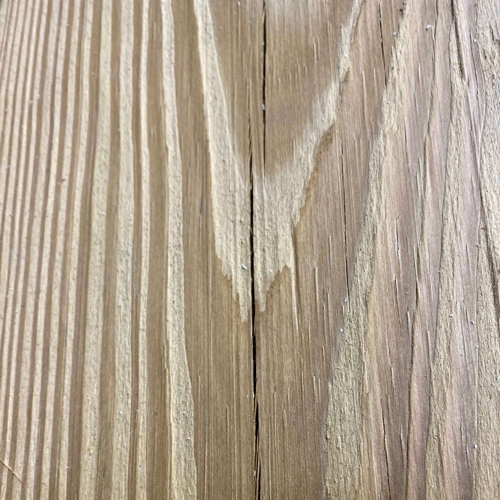 When it comes to building projects---especially outdoor structures like decks, fences, and sheds---treated lumber is a popular choice due to its resistance to decay and insects. However, one concern that often arises among builders and homeowners is the phenomenon known as "checking." This blog post will explore what checking is, why it occurs in treated lumber, and how it does not affect the structural integrity of your projects.
When it comes to building projects---especially outdoor structures like decks, fences, and sheds---treated lumber is a popular choice due to its resistance to decay and insects. However, one concern that often arises among builders and homeowners is the phenomenon known as "checking." This blog post will explore what checking is, why it occurs in treated lumber, and how it does not affect the structural integrity of your projects.
What is Checking?
Checking refers to the cracks or splits that can develop in the surface of wood as it dries and shrinks. This natural process occurs as the moisture content in the wood decreases, leading to a change in volume. While it may seem alarming, especially when investing in treated lumber for structural projects, checking is a common characteristic of many types of wood, including treated lumber.
Why Does Checking Occur?
Understanding the causes of checking can help alleviate concerns about its implications for structural integrity. Here are the primary factors that contribute to checking in treated lumber:
Moisture Content: Freshly treated lumber typically has a higher moisture content. As this moisture evaporates, the wood fibers contract, leading to the formation of cracks on the surface.
Wood Type: Different species of wood have varying tendencies to check. For example, softer woods like pine may be more prone to checking than denser species.
Environmental Conditions: Changes in temperature and humidity can accelerate the drying process. Rapid drying, especially in dry or windy conditions, can exacerbate checking.
Thickness and Orientation: Thicker pieces of lumber and boards that are cut from specific orientations (like quarter-sawn wood) may be more susceptible to checking due to uneven drying rates.
The Impact of Checking on Structural Integrity
One of the most critical concerns regarding checking is its effect on the structural integrity of treated lumber. Fortunately, checking does not significantly impact the strength or load-bearing capacity of the wood for several reasons:
1. Superficial Nature of Checking
Most checks are superficial and only affect the outer surface of the wood. They do not penetrate deeply enough to compromise the overall structural integrity. The inner fibers of the wood remain intact and continue to provide strength.
2. Wood's Natural Resilience
Wood is a naturally resilient material. It has the ability to flex and withstand stress, allowing it to handle normal loads effectively. As long as the wood is not severely damaged or rotted, it can retain its load-bearing capabilities despite the presence of checks.
3. Load Distribution
In structural applications, loads are distributed across the entire member rather than concentrated in one area. This distribution minimizes the impact of any minor checks that may develop on the surface.
4. Engineering Standards
Building codes and engineering practices take into account the natural characteristics of wood, including checking. Properly designed structures will be built to accommodate minor defects in lumber without compromising safety or performance.
Checking in treated lumber is a natural occurrence that often raises concerns among builders and homeowners. However, understanding the causes of checking and recognizing its superficial nature can help alleviate fears about its impact on structural integrity. As long as the lumber is properly treated and maintained, the presence of checking should not affect its performance in construction projects.
By following best practices for storage, installation, and maintenance, you can ensure that your treated lumber remains a reliable and durable choice for your outdoor structures. Whether you're building a deck, fence, or other project, embracing the natural characteristics of wood can lead to successful and lasting results.

























